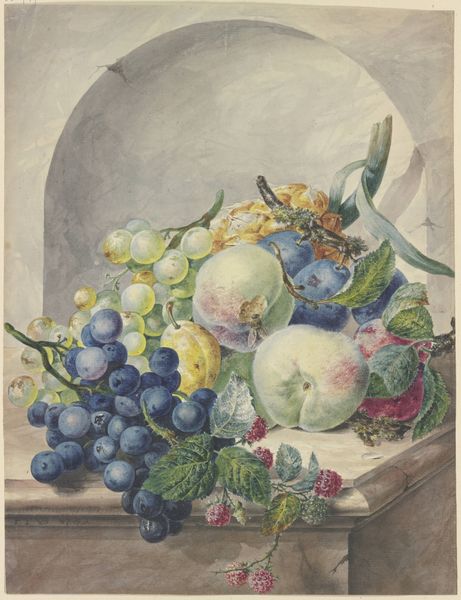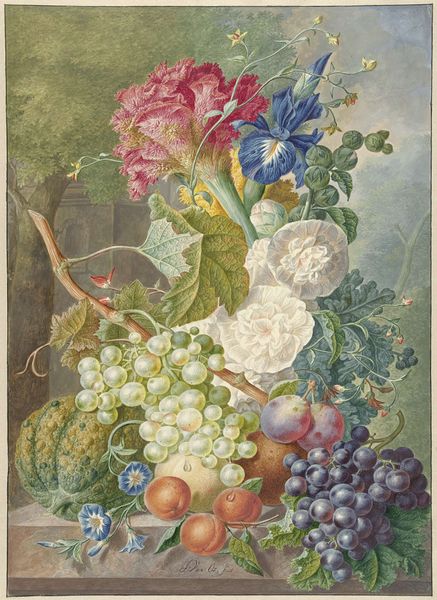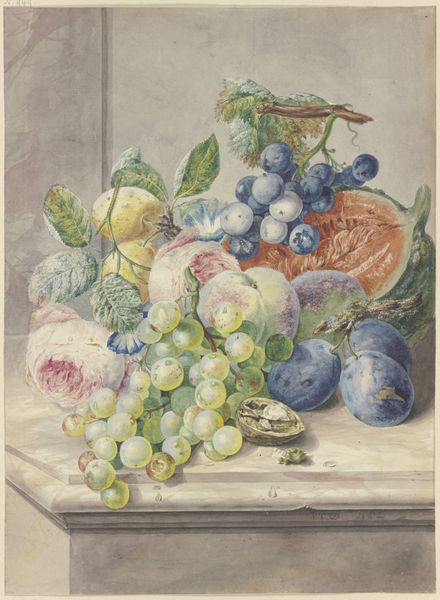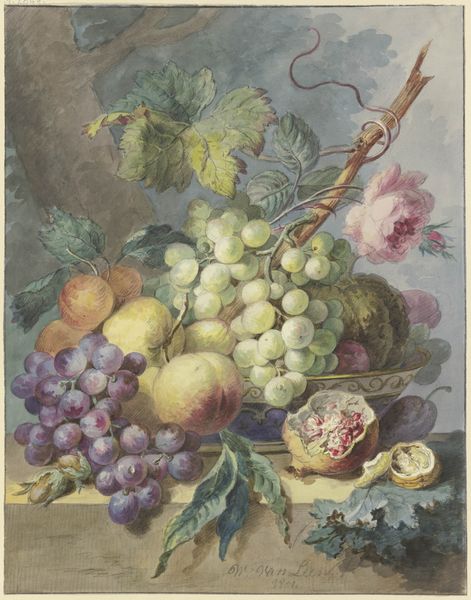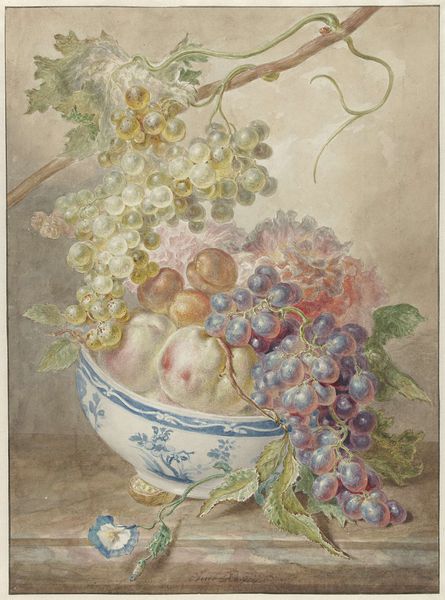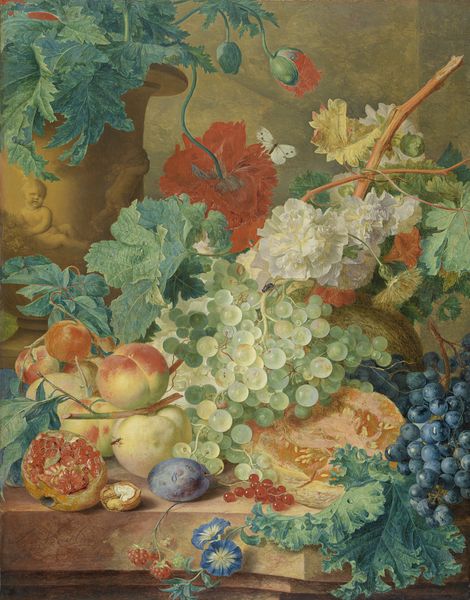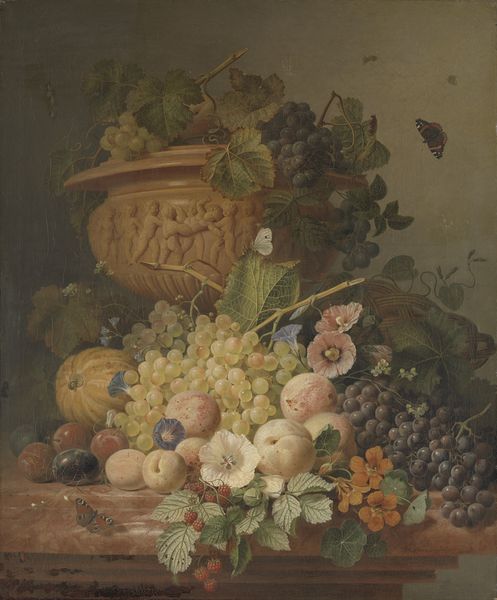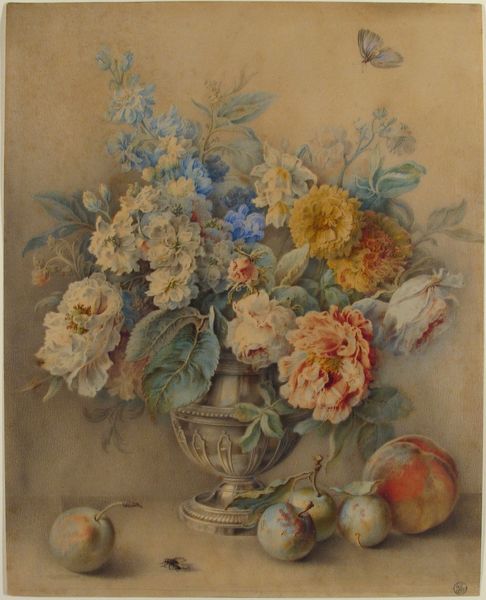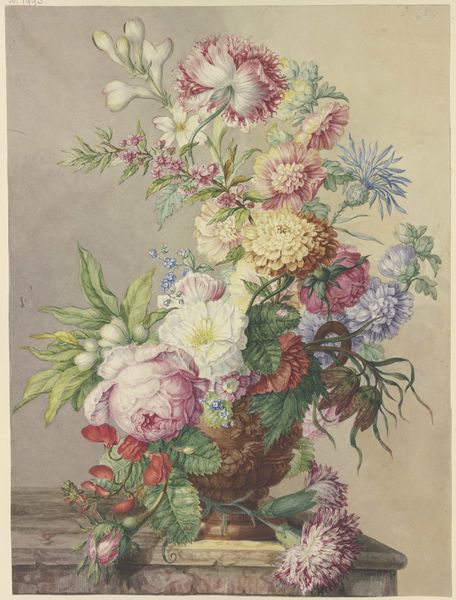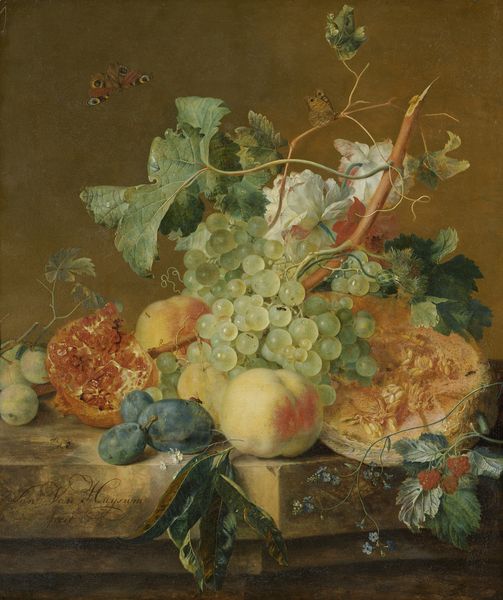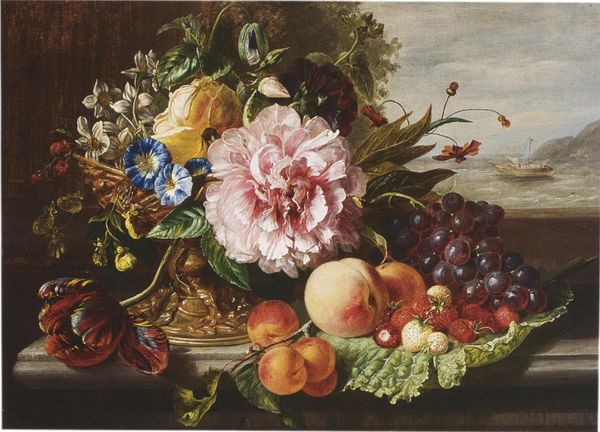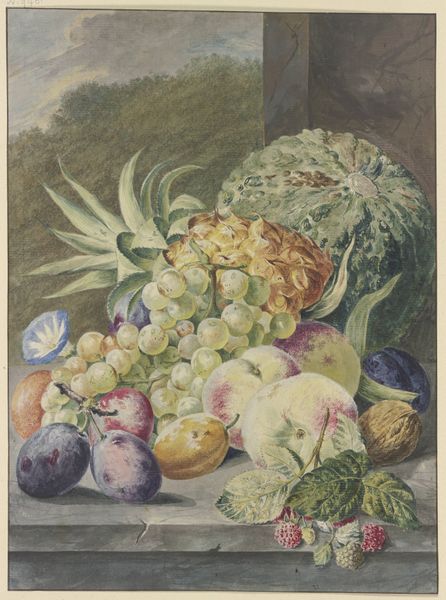
painting, ceramic, watercolor, earthenware
#
painting
#
ceramic
#
watercolor
#
earthenware
#
fruit
#
ceramic
#
earthenware
#
genre-painting
Dimensions: height 590 mm, width 469 mm
Copyright: Rijks Museum: Open Domain
Curator: Looking at "Stilleven met vruchten en bloemen", or "Still Life with Fruit and Flowers", painted between 1781 and 1832 by Annette Reijerman. It is made with watercolor on earthenware. What are your first thoughts? Editor: Well, it definitely whispers "abundance." My initial vibe is gentle melancholy; it’s faded somehow, like an old memory of a lavish feast, not the feast itself. Curator: The symbolism in still life often alludes to the ephemeral nature of life, the passing of time… Reijerman uses both fruits and flowers, common motifs representing fertility and beauty but also decay and the transience of earthly pleasures. Notice the juxtaposition of plump, ripe grapes alongside what appears to be overblown blooms. Editor: Exactly! Those overblown blooms look like they are ready to fall apart any minute. The way she handled the light, the shadows playing across the ceramic, that jug in the background feels solid and eternal while everything else is just... fleeting. Like a memento mori wrapped in something delicious. Curator: And it’s also the era. The late 18th and early 19th century was a period of great social upheaval. The rise of scientific rationalism questioned older mythologies. This affected art, moving away from elaborate allegories towards the observation of nature itself. This genre allowed artists to explore beauty in a domestic, accessible manner. Editor: See, that's where my mind goes. It feels like it’s deliberately not about big statements; more of an intimate, quieter conversation, a celebration of everyday beauty before it disappears, just like us. Plus, that basket weave feels super deliberate. So precise. Curator: Precision certainly plays a role. As does perspective: the use of watercolor helps bring the basketry to the front. These kinds of textures often are meant to give additional context for us in a still life painting. Editor: True. I'd walk by a table like that, overflowing. Now I would stare for hours trying to savor every drop before it faded to memory. Curator: Indeed. The details offer depth and context, turning a simple arrangement into a meditation on time, memory, and perception. Editor: Beautifully put! A lovely glimpse of permanence amidst a world that refuses to stand still.
Comments
No comments
Be the first to comment and join the conversation on the ultimate creative platform.
